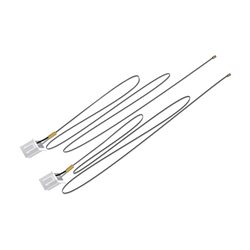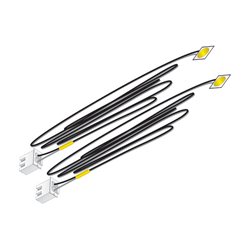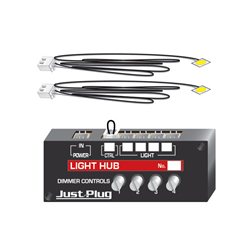The most common wood for baseboards is probably chipboard as this is relatively inexpensive. Plywood is another...
No products
Product successfully added to your shopping cart
There are 0 items in your cart. There is 1 item in your cart.
Search Tips
Christmas and New Year
We are dispatching orders every weekday apart from Christmas Day, Boxing Day and New Year's Day.
If you order is time critical, select next day delivery at checkout.
The shop in Sandown is closed from 25th December, reopening on 30th December.
Should I place lighting within a section of tunnel to make it more realistic ?
Adding lighting to a tunnel can greatly enhance the realism of a model railway or scale modelling project. Tunnels are often dark and mysterious places and by incorporating lighting, a modeller can create a more immersive experience for viewers.
There are several ways in which lighting can be added to a tunnel. One option is to use small LED lights, which can be easily installed along the walls or recessed into the ceiling of the tunnel. These lights can be connected to a power source and controlled with a switch or a dimmer, allowing the brightness to be adjusted as desired.
Another option is to use fibre optic lighting. This involves running thin strands of fibre optic cable along the tunnel walls and connecting them to a light source. The light travels through the fibres, creating a subtle and realistic glow. Fibre optic lighting can be particularly effective for creating the illusion of natural light filtering into the tunnel from an opening at one end.
When deciding on the type of lighting to use, consider the scale of your model. For larger scales such as OO/HO or O gauges, there maybe more space to work with and so larger lights can be utilised. For smaller scales like N gauge, smaller and more compact lighting options maybe needed.
Adding lighting to a tunnel not only increases realism but also allows a modeller to showcase any details within the tunnel. It can highlight architectural features, add depth to the scene and create interesting shadows and reflections.
Remember to plan any lighting solution carefully to ensure it complements the overall theme and atmosphere of the layout. Like so many aspects of layout design, trial-and-error is a good mindset to adopt, so don't be afraid to experiment with different lighting positions and intensities to achieve the desired effect.
In conclusion, incorporating lighting in a tunnel can greatly enhance the realism and visual appeal of a layout or scale modelling project. It adds depth, highlights details and creates a more immersive experience for viewers.
Click here to receive the tips weekly in your mailbox. You can unsubscribe at any time.










